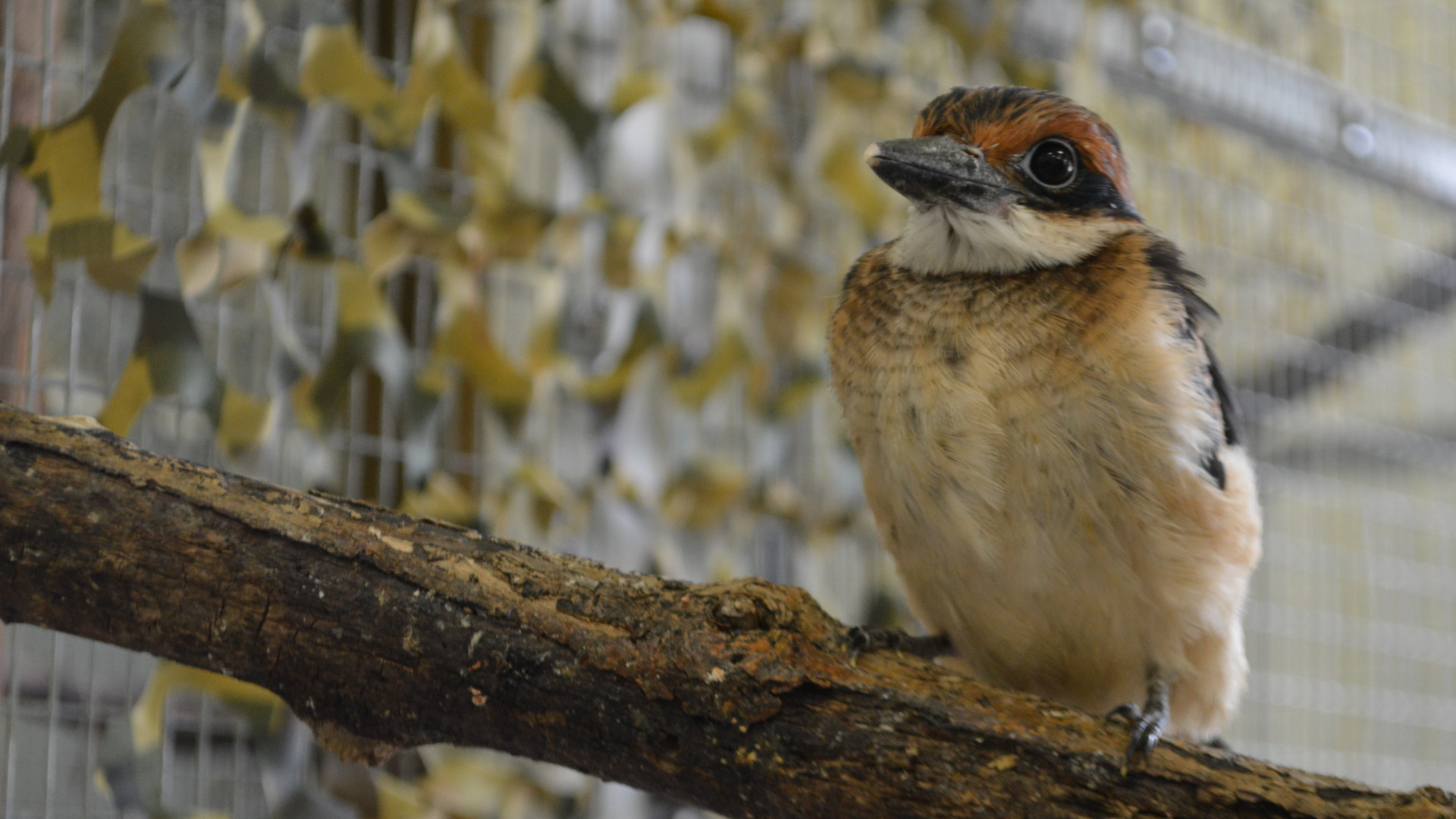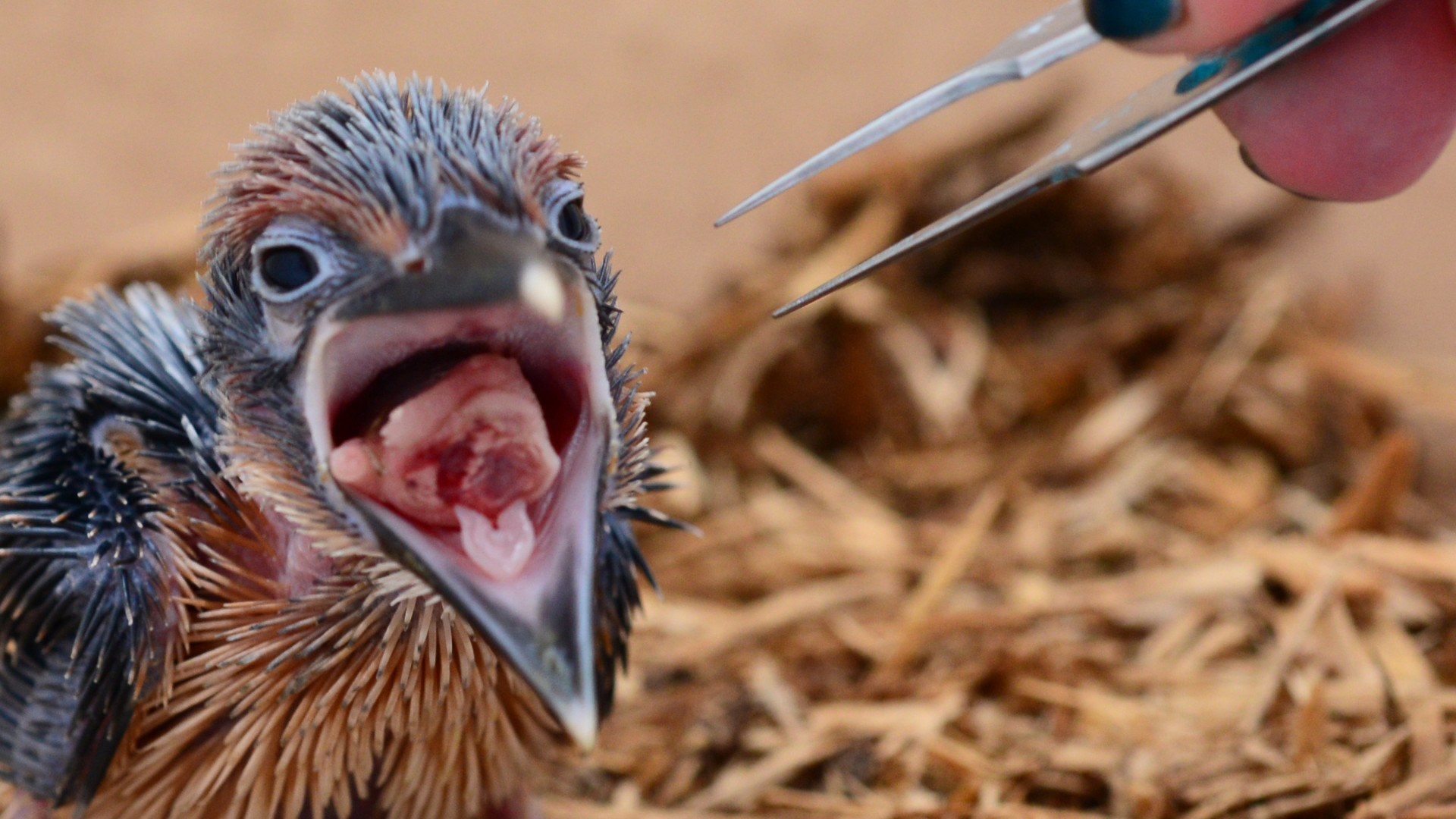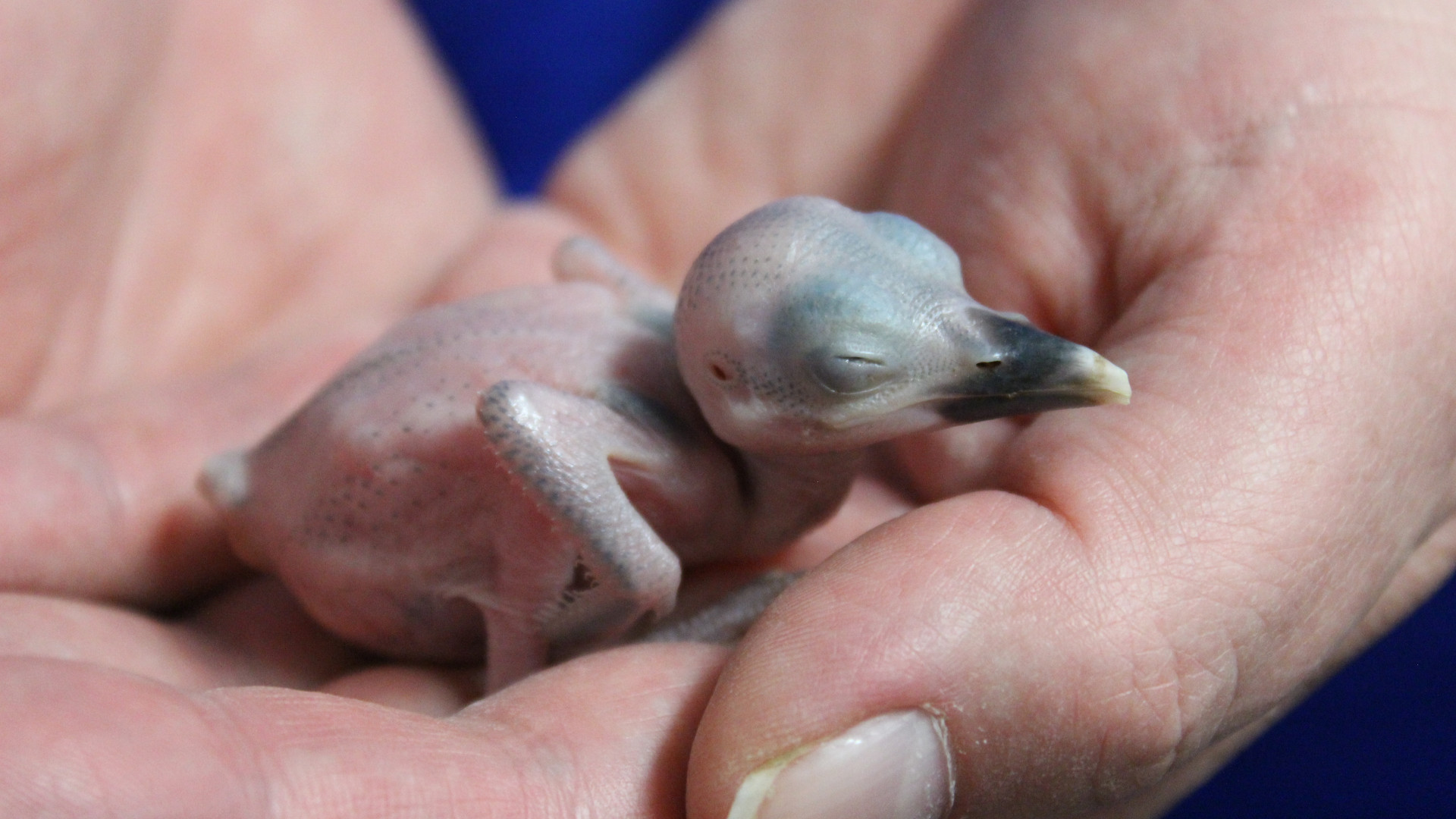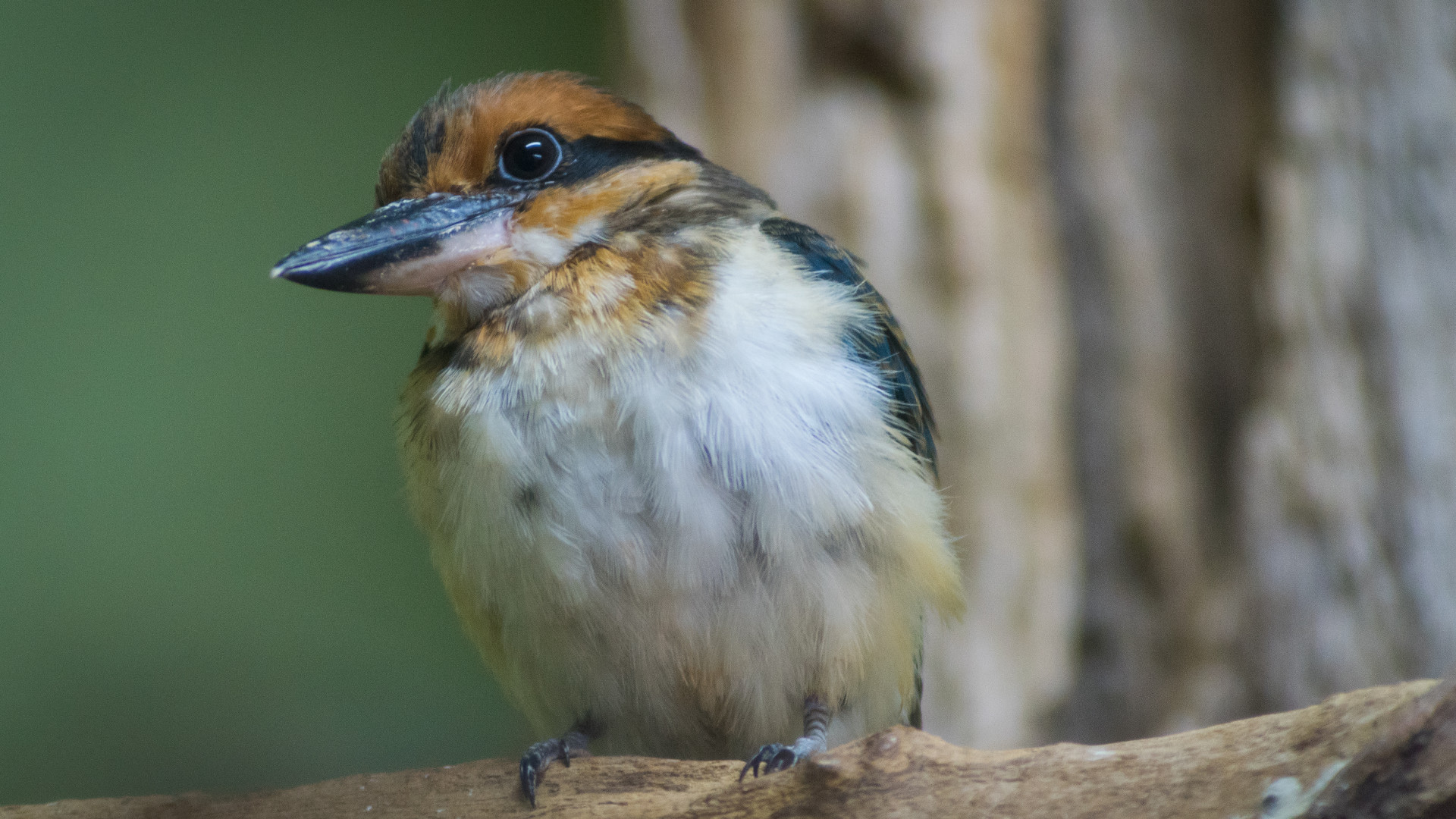I rounded a corner and there it was: one of the world’s last 150 Guam kingfishers (Todiramphus cinnamominus). The bright orange, blue and white bird sat by itself on a branch in an enclosure at Pittsburgh’s National Aviary, watching visitors as they passed by. It didn’t seem to blink an eye as I stood there for several minutes, starting at this tiny, beautiful and vitally important bird.
I knew that I was incredibly lucky to have the opportunity to see this rare species. Once native to the island after which it’s named, the Guam kingfisher all but disappeared during the decades after World War II, when invasive brown tree snakes (Boiga irregularis) arrived and ate their way through the native fauna. By the 1970s most of Guam’s unique bird species had gone extinct.
The island’s kingfishers held on for a few more years, until 1988, the last year they were seen in the wild.
Luckily, just before that fateful day, conservationists managed to capture a total of 29 birds and bring them into captivity for protection. The kingfishers were transported to a number of U.S. zoos, where they became the core of a breeding program that has managed to save the species from extinction.
Today 11 of those birds, including two breeding pairs, live at the National Aviary, one of more than two dozen U.S. zoos and one government facility on Guam that are participating in the kingfisher’s Species Survival Program. The aviary had 13 of the birds until earlier this month, when two young offspring were sent to zoos in Denver and St. Louis to help boost their own breeding programs.
The breeding pairs have done remarkably well in less-than-tropical Pittsburgh since they arrived just two nesting seasons ago. “We produced four offspring our first year and five our second year,” says Kurt Hundgen, the National Aviary’s director of animal collections, speaking to me by phone a few weeks after my visit. “That’s pretty good considering we’ve only had them for roughly three years.”
That success was a bit slow in coming, though. At first, one of the breeding pairs was on display, in the same enclosure where I had seen a female kingfisher during my visit. “They didn’t do much for the first eight months,” Hundgen says. “They do okay when they’re in public view, but they’re very secretive birds.”
After that the aviary moved the breeding pairs off display into specially constructed behind-the-scenes enclosures. There the facility could more closely mimic the temperature, humidity, vegetation, daylight cycles and even sounds of the kingfishers’ native habitat, while also giving them much-need privacy in specially constructed, hollowed-out tree logs and nest cavities.
“That’s when they kicked in,” Hundgen says. The birds took to their new habitats and quickly started mating and laying eggs.

The recent breeding success at the aviary is just part of an important turnaround for the kingfisher’s population, which barely grew during their first two decades in captivity. “For the longest time, the kingfisher population just maintained itself at around 50 to 60 birds,” Hundgen says. That lasted until about 2005, when the participants in the kingfisher working group got together to develop new and more consistent husbandry techniques. “It really has made the difference and that’s where we’ve seen the increase in the captive population.”
One element that has dramatically helped was the decision to carefully hand-rear some kingfisher chicks. Females normally lay a two-egg clutch, but only one of them typically survives. “There has never been a pair in captivity in human care yet that has successfully raised two chicks,” Hundgen says. “So the recommendation became, when you do get two fertile eggs, you let the pair rear one egg and you pull the other one and hand-rear it.”
That’s a pretty intense process. “There are great lengths that go into the details of feeding that chick and caring for it,” says Dr. Pilar Fish, the aviary’s director of veterinary medicine. “It needs to have the perfect temperature, humidity which changes over time, the right amount of food, the right type of food, and the right feeding schedule. It requires such intensive care and allowing their natural activity.”

That’s where another aspect of the special enclosures comes in: the hollow logs in which the birds nest are fitted with hidden cameras. They parent birds feel safe and secure in their private logs, but aviary staff can observe exactly how they behave with their chicks and learn to mimic the same behaviors with the hand-reared chicks.
In addition to all of that, the tiny birds undergo extensive health checks. “We do regular neonatal care on each one of these chicks to make sure that make sure that as they are growing — they grow up so quickly — they’re reaching each developmental milestone and staying as healthy as possible,” says Fish. “There’s a whole team of people caring for them and assuring their health and development.”
Through all of this work, the veterinary team feels the significance of their actions. “Each one of these chicks is so important to its species,” she says.
Sometimes that team actually means rushing to save a chick’s life. “These chicks are so fragile,” Fish says. “They’re just so tiny and they’re naked and every parameter is important.” Because most of the chicks live in the enclosures with their parents, “natural things” happen, like the risk of chicks falling out of their nest.
“In the wild, they would succumb to the elements,” she says. “We have the ability to examine them, treat them, and put them back in the nest.”

“Treat them” might be a bit of an understatement. “One little chick — I remember this vividly — fell out of the nest,” Fish recalls. “I did my veterinary exam and the chick had ruptured its respiratory system. Birds have lungs and air sacs. The chick actually inflated like a balloon and it was having labored breathing. We had to use a tiny needle that is actually used in pediatric medicine human pediatric medicine and prep the area and deflated it and then had to repeat that procedure and give it breathing treatments. We used a human nebulizer, like an asthmatic would need, and we gave it oral medicines, tiny little dilutions of medicine. At this point the check only weighed half an ounce! But within two days it fully recovered from the trauma and within just a week it was completely normal.”
Still, it was a stressful process — both for the bird and its human caretakers. “It’s nerve-wracking to be handling this bird knowing that its species is extinct in the wild and that that little chick is so important,” Fish says. “We’ve been very fortunate that these chicks have recovered, and I tell you what, it’s just a real privilege to be able to be involved in this program. I love working with all birds, but when you know that a bird is gone in the wild and that these birds are the future, then working on them it is really a significant honor.”
Hundgen echoes that sentiment. “I’ve been on Guam on several occasions,” he says. “When you go in the woods, there are no birds anymore. For me, that makes this pretty special to be involved with this species. It’s fulfilling. That’s why we’re here.”
With populations growing at the National Aviary and so many other zoos, will the Guam kingfisher ever again live in the wild? In truth, Guam itself may never host the species — not unless the brown tree snake is completely and permanently eradicated there — but other nearby islands could one day serve as adequate release sites and replacement habitats, especially if the captive population keeps growing. That’s beginning to look more and more likely. “I think you’re going to see the day when the kingfisher will be introduced,” Hundgen says. “Without a doubt.”
Previously in The Revelator:
Whooping Cranes Could Be Wiped Out by Climate Change


